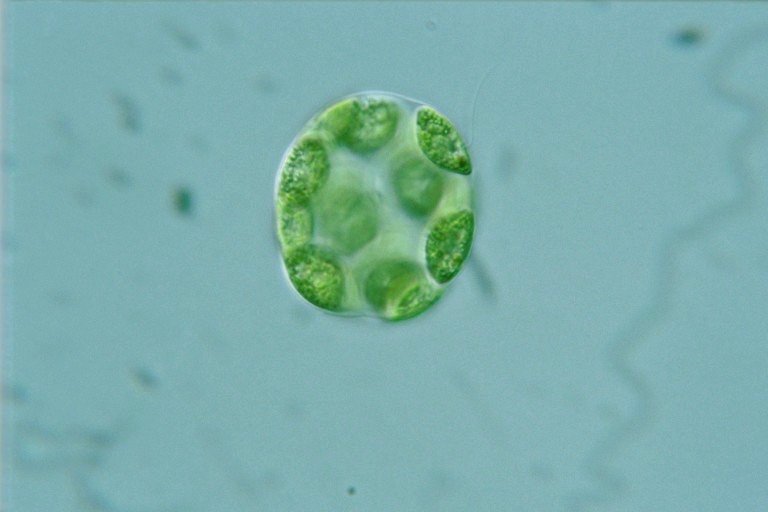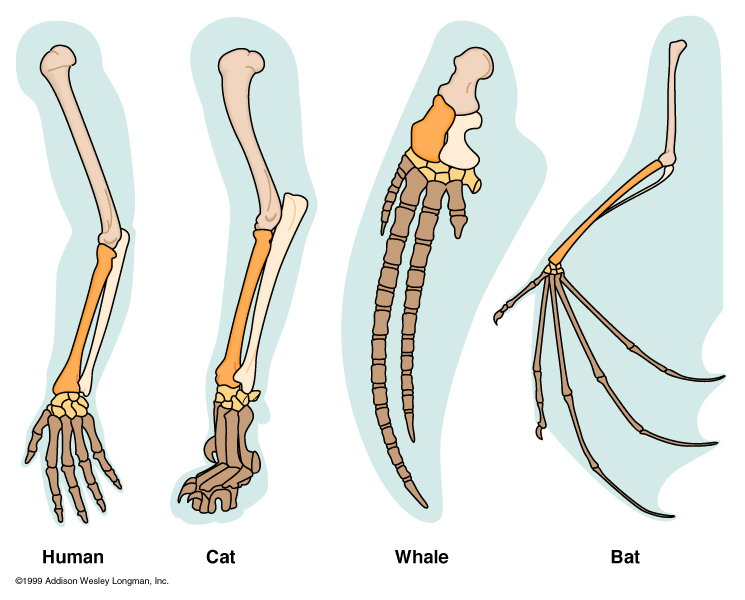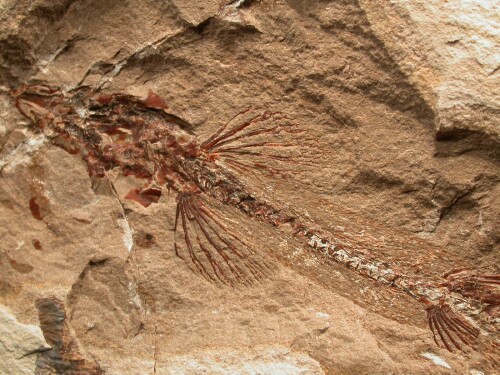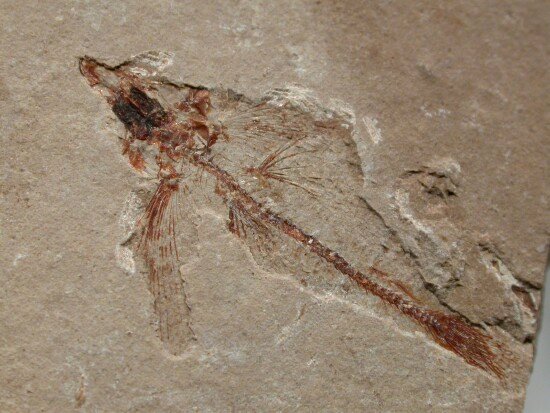Re: Debate: Modern Synthesis of Evolution and Life's Complex
At this point micah you are repeating challenges I've already answered and you continue to change the subject. I will go through and correct all of your misunderstandings below for shits and giggles, but I will not repeat what I've already explained and I will ignore your insane ravings and off topic remarks. I will also repeat my previous challenge in my concluding paragraph.

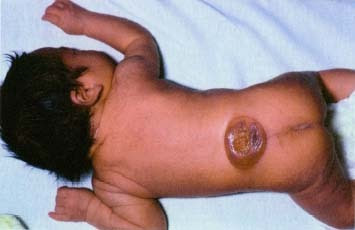
Spina bifida

Atavistic tail
Unless of course you're going to argue that this australopith child qualifies as being human.

Credit: Wynn et al 2006
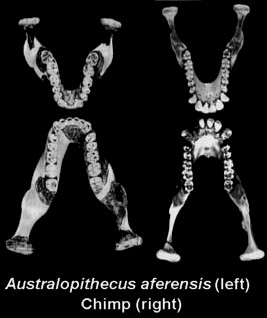
Compare that with this
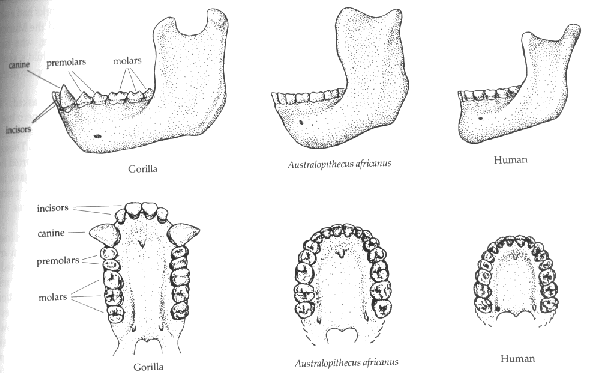

Credit: Glazko et al 2004.
Way to be called on a lie for the third time.
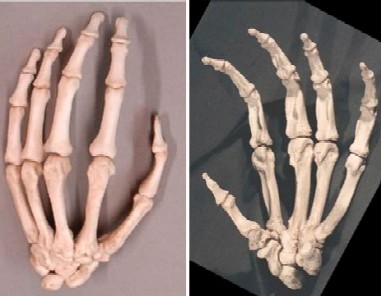
Though this is not morphological difference, it does not provide evidence of evolutionary change. It demonstrates only difference between man and ape.
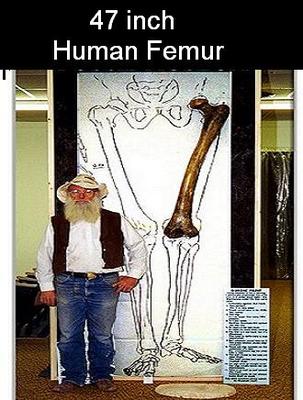
Credit: http://scienceandthebible.xanga.com/679730797/item/
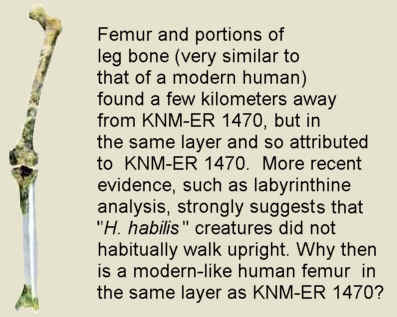
Credit: http://www.detectingdesign.com/earlyman.html
Human femurs do not run parallel as they do in cercopithecids.
And as I said earlier I will press this point until you answer it.
As others have pointed out and I've noticed over the past few exchanges you keep changing the subject and I keep proving you wrong. Now I'll ask that you be accountable and concede all of these points. If you disagree then let's go through and you can bring up a single point (as listed above) in your next post contesting what I haven't adequately refuted and we'll go from there. I will continue to press this point until you answer my challenge.
At this point micah you are repeating challenges I've already answered and you continue to change the subject. I will go through and correct all of your misunderstandings below for shits and giggles, but I will not repeat what I've already explained and I will ignore your insane ravings and off topic remarks. I will also repeat my previous challenge in my concluding paragraph.
Then answer my challenge to you which I laid out at the end of my last post.micah1116 said:I'm not changing the subject...
Why?micah1116 said:It is impossible for evolution to proceed by a continual loss of information.
They didn't. Feathers have a variety of functions other than flight, including insulation, mating displays, a way to look bigger to frighten rivals or enemies, ext.micah1116 said:"We already know from fossils that many theropods already had feathers and that modern aves have lost many features since evolving from maniraptorans."
Thisa assumption is unsupportable and hypocritical. If dinosaurs already had feathers, it is illogical to believe feathers evolved for the purpose of flight.
This argument has been eviscerated by a taxonomist already.micah1116 said:"Add that with what we know about dinosaur phylogeny the line leading up to birds experienced a net loss in genome size, thus a loss of what you call information."
We know no such thing. Phylogenetics demonstrates only that creatures which share a common environment were designed to have similar features because these features make them best suited for thier environment.
So now you do admit that changes in shape, size, and color is evolutionary change?micah1116 said:Many creatures share features such as a toothy mouth and other features which evolutionists claim is because they're related by evolution, but these creatures defy evolution because of the great morphological differences between them, and features such as mimicry - the abilities to change the color, texture, and shape of their skin to simulate the enivronent or other creatures.
Nature selects organisms which bear traits which look more like a poisons species, plants, or any other thing which a predator wouldn't notice or want to eat.micah1116 said:Creatures which evolutionists believe are not related by related by evolutionary ancestry, such as cuttle fish, octopus, squid, camelion, and other creatures, don't share mimicry. But evolution can't provide an explaination for mimicry because nature can't provide a mechanism whereby a creature could posess from birth an ability to mimic it's environment, or the features of the creature which produce mimicry.
You really seem to be unaware that you are bringing up evidence against your position. Homologous organs are evidence of evolution and so is the presence of a yolk sac in embryonic development. After all if we never descended from primitive egg laying "reptile-like mammals" or "mammal-like reptiles" but were designed in present form, why would we have these traits?micah1116 said:Yolk Sac - evolutionists claim the yolk sac of humans and chickens is evidence we are distantly related. In chickens, the yolk sac nourishes the embreyo during development. But in humans the yolk sac does not nourish the embryo because humans are attached to their mother by the umbilical cord. The yolk sac instead is the source of the human embryo's first blood cells. Here we see that homologous features are not evidence of evolutionary ancestry, but are instead elements of common design.

Heakel was ridiculed for his fraudulent drawings and his incorrect beliefs that he could produce a Darwinian-Lamarkian synthesis, which is what some creationists seem to think evolution is. While his idea that embryology would show adult species in animals evolutionary history was disproved, the core idea, that embryology is a good line of evidence to construct phylograms has been vindicated by recent research in the study of evo-devo.micah1116 said:Ernst Heakel promoted this concept over a century ago and was ridiculed and shamed for it.
Again wrong. The first jawed fishes developed their mandibles from modifications in the pharyngeal arches which support the gills. Similarly when synapsids were diverging from basal amniotes the post-dentary bones developed into the complex parts of the middle ear. And you know what this is exactly what is indicated both in embryonic development and in the fossil record. Like I said in my second post, you really should read "Your Inner Fish". Stop trying to spin evidence as being fraudulent especially when scientists have corrected said errors and presented evidence in concordance with what is correct. Creationists on the other hand did nothing.micah1116 said:This idea became known as "Ontogeny recapitulates Phylogeny." He proposed that the transverse clefts the necks of human embryones are vestigial of fish gills, and that this was evidence that embryology provides evidence of ancestry. This is false however, as it is now known that the first of these pouches develop into the palatine tonsils, the sencond become the middle ear cannals, and the 3rd and 4th become the parathyroid and thymus glands.
Actually some of these atavistic tails do have fully developed muscles, articulating discs, nerves, muscles, and caudal vertebra, so they are true tails. This is not consistent with spina bifida. The two are so easy to distinguish, you must have just glanced at a creationist article and regurgitate what you read without any understanding.micah1116 said:Humans born with what looks like a tail is merely a piece of skin covering fat, and is caused by an error in the way the spinal system develops as it "zippers shut" going downward. When it does not go far enough, it causes Spina Bifida. When it goes too far, it produces what evolutionists falaciously call a vestigial tail.

Spina bifida

Atavistic tail
I'm not going to continue sifting through this and pointing out what else you've gotten wrong. This video by a scientists who actually does study cladistic taxonomy, aka phylogenetics, does a great job in doing so.micah1116 said:Though discredited by modern science, the concept of Phylogenetics being evidence of evolution is still pushed by evolutionists. For example, the university text book titled BIOLOGY by Miller and Levine continues to provide photographic examples of the embryos of various species, including humans, and claim it is evidence of evolution. In fact, This book contained the illustrations of Earnst Haekel until creationists complained that Haekel's drawings had been revealed as falacious, at which time Miller asked the publisher to replace them with newer illustrations of the same sort.
Wait so a system of classifying life according to an origin of common descent being driven by natural selection was invented by creationists? You really don't have a clue of what you're talking about.micah1116 said:Phylogenetics was invented by creationists...
You should keep up with studies like this one. If you had you might know how wrong that statement is.micah1116 said:The fact that changes during embryonic development require information which is provided by the the presence of all homeobox genes is a problem for evolutionists claiming that similarities in the embryonic cells of creatures of different phylum is evidence of common ancestry between the phylum because the changes which occur to these cells is based upon epigenetic information which requires the entire genome of the organism to be fully in tact - the genome of a phylum.
So you're seriously arguing that similarities are based on differences?micah1116 said:This demonstrates that the similarity in the embryonic cells is not based upon similarity, but difference.
What do you mean by "worms"? That's a polyphyletic term used to describe a variety invertebrates in different clades. I'd also like to get your source on that as I'm pretty sure the heart in at least most worms as well as humans develops from the mesoderm.micah1116 said:Furthermore, the cells of germ layers are not directly related to each other across genus. For example, the cells of germ layers which develop the heart in humans don't develop a heart in worms.
So it looks like you skipped over my post on the Cambrian then.micah1116 said:Thus, germ layer cells themselves are not related to structure homogenously across genus, and germ layers are not evidence of evolutionary ancestry, and the claim that because humans and worms have 3 germ layers they are related by a divergent evolution event long ago.
I provided those examples to prove that you were lying when you said that "supposed" hominids are just juvenile extant African apes.micah1116 said:"For example AL-288-1 is an adult female Australopithecus afarensis, and we've also found the remains of infants of that same species like the DIK-1/1 specimen."
Finding both adolescents and adults of an extinct ape does not provide evidence of evolution. That's a no-brainer.
You really should keep up with modern genetic studies.micah1116 said:"you talk about ape ontogeny which, but don't realize that when you compare the development of chimps to us you'll find it's nearly the same. The only major difference between two of us is that we retain a pedomorphic build and an increase in cranial volume."
False. Firstly, the human brain develops 3 times faster than apes. This discredits evolution, s there is no explaination how evolution could cause suddently an organism's brain to develop 3 times faster than it's supposed ancestor.
If they aren't capable of breeding (aka copulating) they aren't capable of reproducing.micah1116 said:"So since a chihuahua and a great dane, despite being similar, can't interbreed, they can't be related can they?"
They are capable of reproduction, but not breeding. They are the same kind. Their genetics allows for reproduction.
Same story with humans and chimps.micah1116 said:"Ichallenge you to breed a miniature dachshund and a timber wolf."
Thier genetics allows for reproduction. Thier body sizes do not.
I'm beginning to suspect that you are a Nephilimfree sock account now.micah1116 said:"I know your bastardized definition of "morphology" and I already have presented exactly what you've asked."
You have not. Nobody is "bastardizing" the definition of morphology, you just don't like facing the facts regarding morphology because it refutes evolutionism. Mporphology ids the form and structure of a life form. Form AND structure.
Correction, you can provide 100 quote mines.micah1116 said:I can provide you with 100 quotes by evolutionist scientiwsts who state the fossils indicate only non-change and that the lack or absence of transitional forms is a problem for evolution.
Yes other apes do have decidious molars.micah1116 said:"Yes we do. Don't take this the wrong way, but do you remember your childhood? Don't you remember losing your "baby" teeth in primary school and new ones growing back?"
I misspoke. Humans have deciduous molars. Apes do not. This is a morphological difference. There is no evidence of this transition either!
Unless of course you're going to argue that this australopith child qualifies as being human.

Credit: Wynn et al 2006
Wrong. The Taung child was not a chimpanzee. Also you are arguing against yourself again, both by admitting that the Taung child had deciduous molars, and by link an a pic of an australopith jaw illustrating the development of a parabolic jaw.micah1116 said:"the Taung child which did have milk teeth"
This ape was a variety of chimpanze, and has chimpanze teeth:
http://www.detectingdesign.com/images/EarlyMan/Australopithecus%20africanus%20jaw.jpg

Compare that with this

And that claim was disproved half a century ago.micah1116 said:Zuckerman suggested that they be classified as apes, not hominids (Evolution as a Process, 1954)...
Define "dramatically", because the slop of the forehead in our species is pretty limited compared to extinct fossil forms.micah1116 said:There are differences in the robustness of different bones in humans as well, even in the slope of the forehead which can vary greatly in humans. In some humans, the forehead is nearly vertical. In others, it slopes dramatically.
These humans did.micah1116 said:This is not evidence of evolution. It is evidence of variety within the kind. We know this: chimps and gorillas have this ridge, as do australiopethicenes, humans do not.
As does and do ours.micah1116 said:The pelvis of australiopethicenes does not allow for upright walking. It's Illiac Blade points outward, it's knees are bent inward...
Yes they do.micah1116 said:..., and it does not have a locking knee joint.
The how are you defining "apes"? You stated that the posterior placement of the foramen magnum was a character indicative of apes, and anterior placement was something which you implied was a human trait. And the fossil I presented above as well as all other homininds mentioned so far have there spines connected to the base of the skull rather than the rear, just like bipedal humans and aves.micah1116 said:"And as I said before according to you Sahelanthropus is not an ape because of the location of its foramen magnum"
Nonsence. It is most certainly an ape:
http://www.southernbiological.com/Assets/images/Products/Models/BoneClones/BH029.jpg
Source please.micah1116 said:"Then Homo neanderthalensis, H. erectus, and all other species in the genus Homo, except us, should all be considered apes, and we shouldn't be?"
Furthermore, the hot swapping points of the DNA of apes and man are almost entirely different. It is not possible for these to migrate, as the change of one of them would cause either gross deformity or death.
No, no, and yes. I, unlike you, read the whole paper. You've been called on this already. Had you read it you would have known that the protein differences are due to a relatively small amount of mutations, most of them being almost the same.micah1116 said:"These proteins are what make humans and chimpanzees distinct species, and 80% of these protiens are not completely different from our own."
False. Gene, volume 346 14 February 2005, Pages 215-219, states, referring to the protien difference between humans and chimps, I quote:
"However, if one looks at proteins, which are mainly responsible for phenotypic differences, the picture is quite different, and about 80% of proteins are different between the two species."
http://www.sciencedirect.com/science?_ob=ArticleURL&_udi=B6T39-4FC449B-6&_user=10&_coverDate=02%2F14%2F2005&_rdoc=1&_fmt=high&_orig=search&_sort=d&_docanchor=&view=c&_searchStrId=1429445469&_rerunOrigin=google&_acct=C000050221&_version=1&_urlVersion=0&_userid=10&md5=85491f2a0a0abb2af68cdaeaab34f1af
I suppose now you are going to claim these scientists have their information wrong? Perhaps you did not actually read what their paper says? Surely you saw this statement in the abstract. Didn't you?

Credit: Glazko et al 2004.
Way to be called on a lie for the third time.
They were fully human, just not the same species we are. And no, they were not disease ridden humans or apart of our species. We've found hundreds of them, including male and female adults as well as small children, and even there DNA proving you wrong on both accounts. Further more another character you claimed separated humans from apes was a barrel chest, which is something H. neanderthalensis had, as well as some H. erectus, but we lack. So according to you both of these species qualify as apes.micah1116 said:"Then species like the neanderthals are apes, and we aren't?"
Neanderthal was not an ape. It was an inbred, disease-ridden, genetically destroyed tribe of man. They suffered from rickets and scurvy and arthritis and their DNA was made into a mess by random mutation and inbreeding. That's why they became extinct. Their skeletons are fully human but deformed because of disease.
I'll repeat this question too until you answer it, does this now mean that some australopith species no longer qualify as apes since their hallux are no longer divergent?micah1116 said:"Besides that does this now mean that some australopith species no longer qualify as apes since their hallux are no longer divergent?"
Your question is unworthy of response...
Are they now? I suppose you could tell me which of these curved phalanges belong to a human and which belong to a gorilla. And why is it that both of them are curved and look so similar?micah1116 said:...evenso, Australiopethicene finger bones are curved. Man's are not.

Though this is not morphological difference, it does not provide evidence of evolutionary change. It demonstrates only difference between man and ape.
I agree. I said so in my other post.micah1116 said:Encyclopedia Britanica:
"Polyploid animals are far less common, and the process appears to have had little effect on animal speciation."
w w w . britannica . c o m / EBchecked / topic / 469046 / polyploidy
Once again you are at variance with reality.micah1116 said:Thus, if chromosome 2 were merged in a human, it could not breed, and the mistake dissapears in the gametes of that person (sperm or egg cells) in a single generation - for good - when that person dies. It cannot therefore be hereditary in humans.
Yeah this evidently happened and I provided a source for you to check it out for yourself.micah1116 said:"What do you mean? What part of evolution requires that humans have more DNA than our cousins?"
The 10% more DNA of chimps discredits evolution because it would indicate, for evolution, that humans have lost 10% of their genetic information.
Obviously not.micah1116 said:This would obviously be disasterous for any living thing.
Evolution is not about becoming "greater" it's about adaptation to changing conditions.micah1116 said:Are you claiming the loss of 10% of the genome of an organism will not only allow it to survive or cause it to become something with new, greater capabilityies, such as becoming bipedal and increasing the number of bones in the skeleton and having a brain 3 times the size of chimps?
Wait, so now you're admitting that your sources state that these sequences between humans and chimps are identical! You are arguing against yourself again, man.micah1116 said:"but I'd like to get your source on the information provided above."
http://www.ncbi.nlm.nih.gov/pubmed/3003370
Humans have two α-globin genes; HBA1 and HBA2, which are both at locus 16p13.3 ("HBA1," nd; "HBA2," nd). Not only do chimps also have two α-globin genes (Liebhaber & Begley, 1983), but "human and chimpanzee G-gamma, A-gamma, alpha, and beta globin sequences are identical (Goodman, Moore, & Barnabas, 1972, p.43)."
If you want more, there are plenty of them. Google will turn up plenty of information for you, though it will be filled with evolutionist assumptions that this difference evolved.
I'd call a 1-2% difference minor.micah1116 said:"And why does this minor difference, according to you, separate humans from the family of great apes?"
Minor? There is nothing minor about basic differences in the design of the DNA of apes and man.
Yeah I did kinda fuck up that sentence. However the point I made in that paragraph was that there are lots of extinct apes with a variety of cranial capacity, which disprove your statement above.micah1116 said:"Any extant non-human ape"
No, all apes. The human brain is 3 times larger than any ape known, past or present.
Don't project your own faults in to me. You even admit that they are the "same size and sometimes a bit larger". So once again you are disagreeing with yourself. You even posted previously that a neanderthal was found (the "Old man" find) with a cranial capacity over 1600. Compare that to humans which averages to be about 1400 cc. In fact some H. neanderthalensis have been documented having a cranial capacity which exceeds 1700 cc.micah1116 said:"In fact H. neanderthalensis had a much larger cranial capacity than we do."
That is false. It is the same size and sometimes a bit larger. You have stated a gross exaggeration, a falacy.
All apes are trichromates, as are most anthropoids. It's one of our defining characteristics.micah1116 said:"Most anthropoid primates, like ourselves, have trichromatic vision. So why are you pointing out the exception, rather than the rule?"
It's a difference between man and ape.
Looks like I'm right so far.micah1116 said:"Wrong. Australopith remains date from about four million years ago until about two million years ago."
WRONG
2.9-2.4 million years ago
http://www.archaeologyinfo.com/australopithecusafricanus.htm
3.9-4.2 million years ago
http://www.anth.ucsb.edu/faculty/walker/classes/anth121/121%20Australopithecine%20Lifeways.htm
2.3 to 3.3 million years
https://www.msu.edu/~heslipst/contents/ANP440/africanus.htm
Actually your source provides a variety of dates (3.5-1.5 mya) for the Sternkfontien strata, which historically have been difficult to date. However it does provide the possibility along with evidence that the strata is younger than two million years, so I accept that. But why are you citing this? I thought you rejected radiometric dating outright?micah1116 said:1.5 Ma--ca. 2.5 Ma
http://www.profleeberger.com/files/BERGER_ET_AL.PDF
This source provides dates consistent with what I've said.micah1116 said:Various dates here:
http://blue.utb.edu/paullgj/anth2301/lectures/australopithecus.html
Swing and a miss. This source provides a date for a robust species of aurstralopith which have been given their own genus, Paranthropus. Most taxonomists, anthropologists haven't gone with that method of classifying those animals in decades. And I have made that distinction clear in my earlier posts. I will ask that you use current data and terms.micah1116 said:1.4 million years
http://www.sciencedirect.com/science?_ob=ArticleURL&_udi=B6WJS-4W8TJC6-1&_user=10&_coverDate=05%2F31%2F2009&_rdoc=1&_fmt=high&_orig=search&_sort=d&_docanchor=&view=c&_acct=C000050221&_version=1&_urlVersion=0&_userid=10&md5=13f736869ef5cb655863e283fe690223
Then why did you cite a study and then say it came to conclusion opposite of what it really did? And you're right bones may not lie, but you do.micah1116 said:"Further more the study you reference actually comes to the opposite conclusion that you say it does."
I could not care less about the assumptions of evolutionists. The bones don't lie.
Reread my post.micah1116 said:"Not really."
Yes really, YOu did not answer my question:
Why are the skull KNM-ER 1470, the leg bones KNM-ER 148 I, and the skull KNM-ER 1590, found by Richard Leakey in East Africa, assigned to Homo habilis when the skull sizes, skull shapes, and the very modern leg bones would allow assignment to some form of Homo sapiens?
So you are now arguing that habilines weren't bipeds despite what you say in you post right above?micah1116 said:"This is why some experts debate as to whether or not they should be placed in the genus Australopithecus or kept in Homo, and why they are a perfect transitional species."
They argue about thier classification because classifying them as ancestors of man is perposterous, ans my wquestion illustrates. How can they be a perfect transition when they were incapable of bipedalism?
No it's genuine and they evidently do. Check my source. Dr. Duanne Gish, for example, argued that the Turkana boy skeleton was "just human" but he also argued that the Java man skull cap, of the same species, belonged to a large monkey or ape. Even though the Java skull cap exceeds the cranial capacity of the Turkana boy skull, and bears obvious H. erectus traits. So yes, creationist do argue that humans are apes, and that fossil hominids are human. We are 100% both!miccah1116 said:"Why is it that creationist seem to be unable to decide if (as well as some of the H. erectus individuals you mentioned earlier) they are "100% human" or "100% ape"?"
The image you provide is fraudulent because it implies creationists classify apes as human. No creationist classifies apes human.
Are you arguing that Homo habilis and H. erectus are "just apes" then?micah1116 said:Evolutionists classify humans as apes and slap the titles Hablis and Erectus on any fossil skull that shows variety.
Their cranial capacity is intermediate between those of derived humans and australopiths. They bear derived post-crania including femurs and feet, smaller teeth and lack megadontia, show signs of heightened intelligence as indicated by (although not the first) stone tools.micah1116 said:"The habilines are a perfect morphological intermediate between australopiths and derived humans"
You're welcome to believe that, but if you do, you should tell me what makes them so.
I was. Have you ever taken any college level biology, geology, or anthropology course? This is the basic material.micah1116 said:"What omissions? You're not seriously trying to fabricate a conspiracy theory are you?"
How about the wildly different dates that man's supposed ancestors are labled with? You don't hear evos tell students of this in college courses.
Actually a mental protuberance is one of the exclusive characters of our species. And I have given examples of fossil forms which illustrate the development of the human jaw and chin.micah1116 said:Humans have both vertical and sloping foreheads, robust or nearly absent chin protuberances, etc.
Source please.micah1116 said:Not all of the hox genes of man and ape are in the same location in the DNA.
Even other creationists, including one of your own sources, disagree with your opinion of the angle of the human femur.micah1116 said:"Wrong. The angle of the femur and the broad short hips of the australopiths are more like those of humans"
WIERD WRONG YOU ARE. WIERD. You show a picture of dissasembled bones.
australopith sediba:
http://scienceblogs.com/laelaps/upload/2010/04/close_to_homo_-_the_announceme/Australopithecus-sediba-skeletons-thumb-439x438-44304.jpg
This is the proper standing leg position for a human:
http://www.horseracinghistory.co.uk/hrho/images/education/human_skeleton.gif

Credit: http://scienceandthebible.xanga.com/679730797/item/

Credit: http://www.detectingdesign.com/earlyman.html
Human femurs do not run parallel as they do in cercopithecids.
And as I said earlier I will press this point until you answer it.
"[A]re you going to admit that we have directly observed the evolution of new kinds, both in microorganisms & macroorganisms as well as other macroevolutionary events? Will you admit that we have transitional species in the fossil record which fit the definition used by expert scientists and your own? Will you admit that we have seen increases in genetic information and changes in homeotic gene expression happen and are inherited in wild populations. Will you also admit that we've seen the origin of new structures and other features in real time and that we have ample evidence through cladistics, genetics, comparative morphology, extant & extinct transitions that other complex organs have evolved? Will you accept that humans are a species of ape? And finally will you accept that all of the evidence I have presented is more than enough to support the fact of the modern synthesis of evolution?"
As others have pointed out and I've noticed over the past few exchanges you keep changing the subject and I keep proving you wrong. Now I'll ask that you be accountable and concede all of these points. If you disagree then let's go through and you can bring up a single point (as listed above) in your next post contesting what I haven't adequately refuted and we'll go from there. I will continue to press this point until you answer my challenge.







